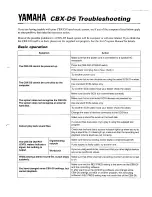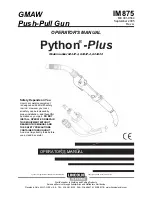
21
Version 1 – GBR (25/10/2022)
D-502-0287
Fig. 16
Fig. 17
Fig. 18
-
When creating a bend - elbow on the siphon hose, make sure to keep the correct bend radius of the
hose to avoid “breaking” the hose and consequently choking the hose and preventing condensate
drainage.
-
Secure the formed siphon with a second 2.5 x 120 mm tie strap (included) to the main drain located on
the unit.
-
Adjust the other end of the siphon hose in length and connect - secure into the sewer system, keeping the
minimum height difference between the siphon hose and the sewer connection.
- Extension of the siphon hose is only permissible beyond the hose loop created. Extend with a hose of the
same or larger diameter using a hose connector. Always ensure the smallest possible reduction of the inner
diameter with the hose coupling.
3.2.3.2.
Connecting an additional condensate drain to the siphon - ventilation in air-conditioned
rooms
-
The unit is equipped with an additional - second condensate drain on the fresh air supply to the building.
The connection of this outlet is necessary especially in buildings that are cooled by air conditioning in
summer, where there is a large difference between the outdoor intake temperature (e.g.: 35°C) and the
indoor exhaust air temperature (e.g: 22°C) with outdoor humidity above 60%.
-
Cut off the end of the additional condensate drain 5 mm long.
-
Make sure you have the same drain hose (PVC - Ø 18/14) as for the main drain connection and 2 pcs of
locking ties.
-
Create a loop to form a siphon and connect to the additional drain as per chapter 3.2.3.1.
-
Connect the ends of the siphons - ends of the hoses to the sewer system, if possible at the installation site:
o
Connecting the two ends of the siphon into one and then connecting it to the sewer system
Min 150 mm
Min 150 mm
















































